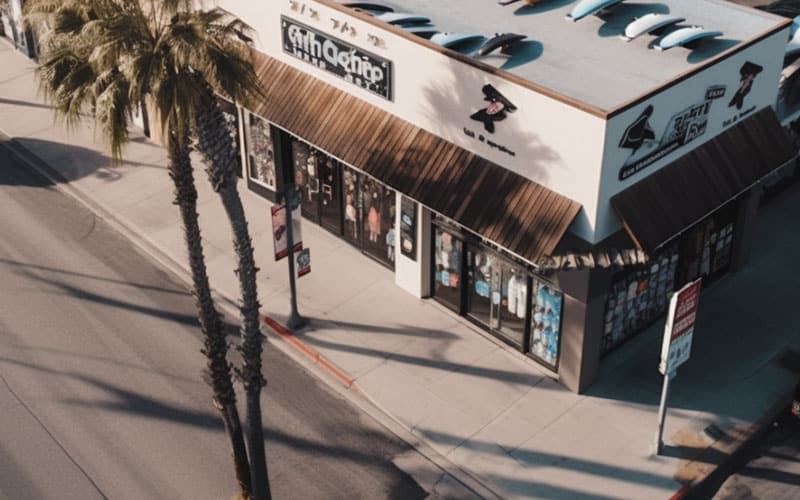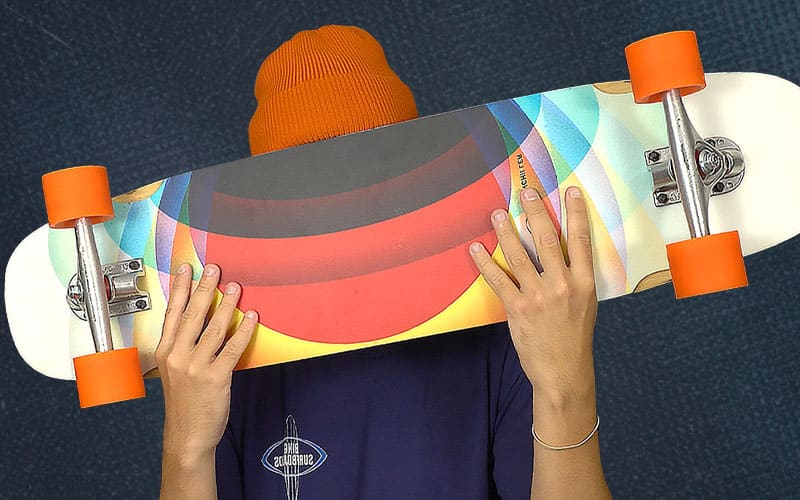Ahhh, the dreaded speed wobble.
Quite possibly the sketchiest feeling in this world…
Alright, that’s dramatic but if you’ve ever experienced it, you feel me.
Fear the wobz no more! This article will cover what it is, how it’s caused, and how to stop it.
What Is Speed Wobble?
Speed wobble is when you pick up speed, and your board starts to wobble uncontrollably. Sometimes, getting to the point where it throws you off.

How To Prevent Speed Wobbles?
There are several things you can do to stop speed wobbles. Initiate a carve or powerslide to control your speed. Slowly shift your weight forward. From an equipment perspective, you can use RKP trucks, tighten or dewedge your trucks, use a longer wheelbase.
What Causes Speed Wobble?
- Leaning backward
- Wrong equipment
Let’s dive a little deeper…
1. Shift weight forward
The first and most effective thing I learned was weight distribution
Now what do I mean?
Well, a lot of the times I experienced speed wobble was when I placed my weight on my back foot rather than my front foot.
Slightly lean forward, have your weight over your front truck, and you’ll be well on your way to combatting the dreaded wobbz
It can feel scary at first – I remember my initial reaction was to lean back and try to get it away from me… but that’s how I felt and that’s the worst thing to do.
Why weight distribution is important?
Watch the trailer weight simulation video below…
So when the majority of the weight is towards the front, the wobble is easier to control – it doesn’t get out of hand. But when it’s placed on the back, you can see it gets wild real quick.
Just having a basic understanding of why weight distribution is important can save you a lot of pain, and anger and hurt in this cold cold world.
2. Initiate carve/powerslide
Second, I’d suggest getting more comfortable with carving and speed checks/powerslides.
Carving down a hill in a figure-eight motion is a great way to control your speed. Same with powerslides but that can be a little trickier to learn.
3. Use the right trucks
We could go pretty deep on this topic but to keep it simple…
The three most common are…
- Traditional kingpin (TKPs)
- Reverse kingpin (RKPs)
- Double kingpin (DKPs)
Without getting too technical into the geometry, basically you’ll have a higher chance of speed wobbles if you use traditional kingpin trucks over reverse kingpin trucks since they have a higher baseplate angle.
If you already have a setup and don’t want to spend additional money, a simple way is to just tighten your trucks. Make sure your back truck isn’t looser than your front because it sort of acts as like an anchor.
Also don’t overtighten them to the point where your bushings deform because it’ll wear them out faster.
If you really want to dial it in, you can get a lower angle rkp, something like 43-degrees since it will have less turn and more lean. Double barrel bushings will also have more resistance than cone bushings, adding more stability.
A urethane formula with a lower rebound will help so it doesn’t spring back as much. And, a harder durometer bushing.
These characteristics together will lessen your chances of speed wobbles.
Just keep in mind, it will start to restrict your carvability.
4. Longer wheelbase
Fourth, use a setup with a longer wheelbase.
If you have a mini cruiser like the penny board, landyachtz dinghy, anything that has a wheelbase range of 14 inches and below, you’ll have a higher chance of getting speed wobbles.
I’ve found that a good wheelbase range for stability is 20-30″ (50-76cm).
It’s not to say you’re automatically gonna get speed wobbles on a smaller wheelbase, it just increases your chances.
5. Dewedge your trucks
And the fifth way to prevent the wobz is to dewedge your trucks.
It’s essentially a cheaper way to lower the angle of your truck without buying a new set.
For example, you can get a 7-degree angled riser pad and dewedge your back truck so it’s less turny.
Additional solutions…
Over time urethane wears down and can create pivot cup “slop”. The more slop your truck has, the higher the chance of speed wobble.
There are several other things you can do to further dial in your setup for speed like precision trucks, insert bushings, washers, the list goes on but really the goal of this was to keep it simple so you can get a basic understanding without being overwhelmed.
Bottom Line
A lot of it comes down to practice and getting comfortable with speed.
Just by shifting your weight forward you’re gonna be much better off. As you saw above, several equipment tweaks help decrease your chances of speed wobble.



